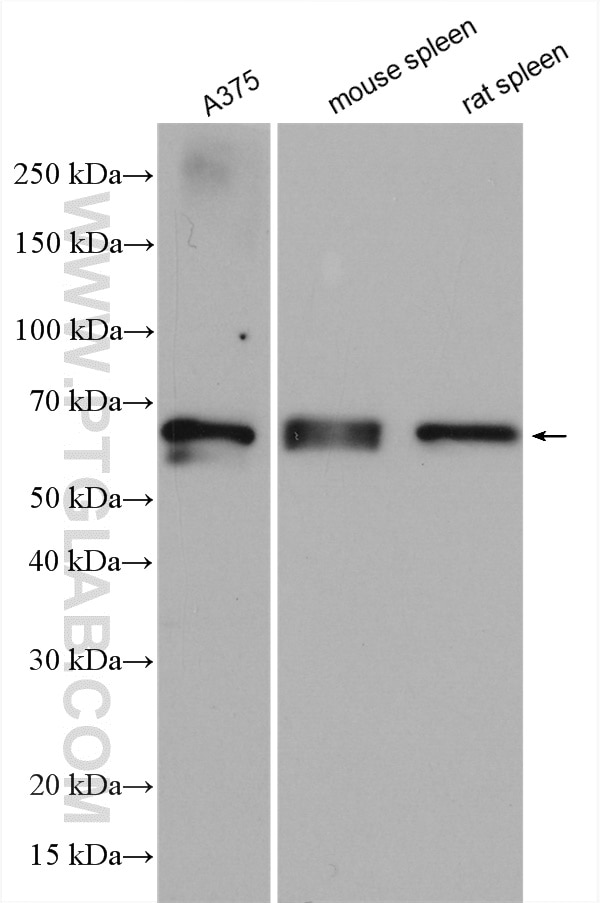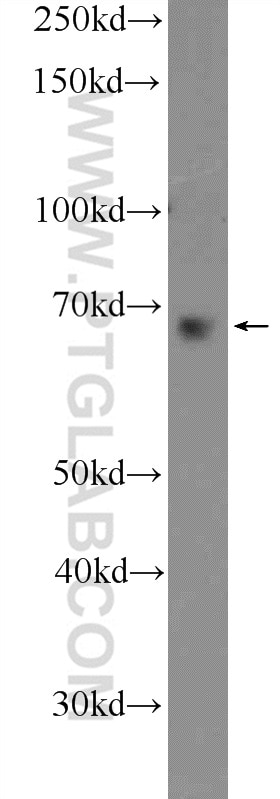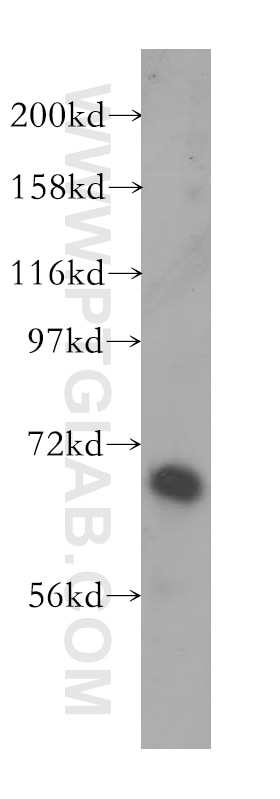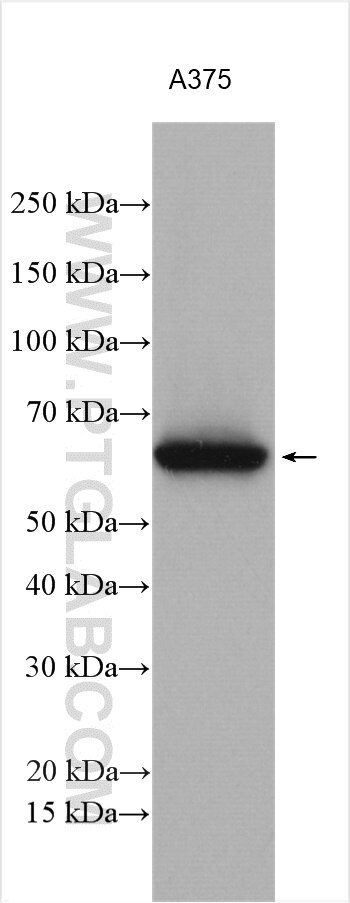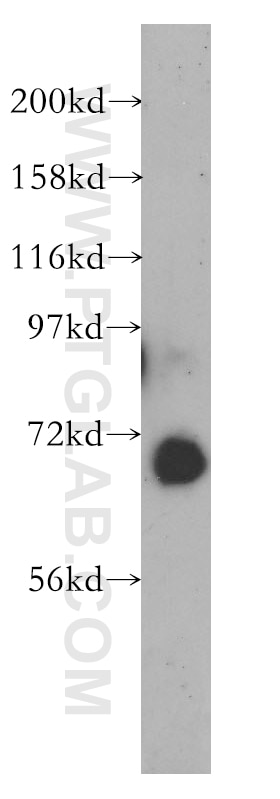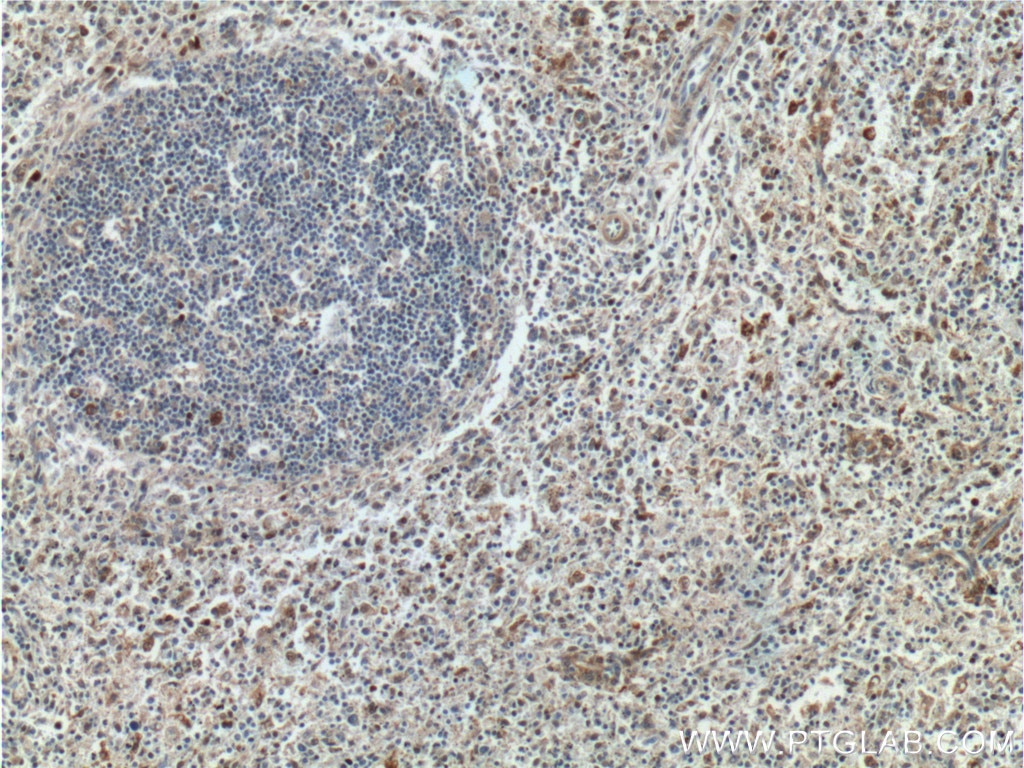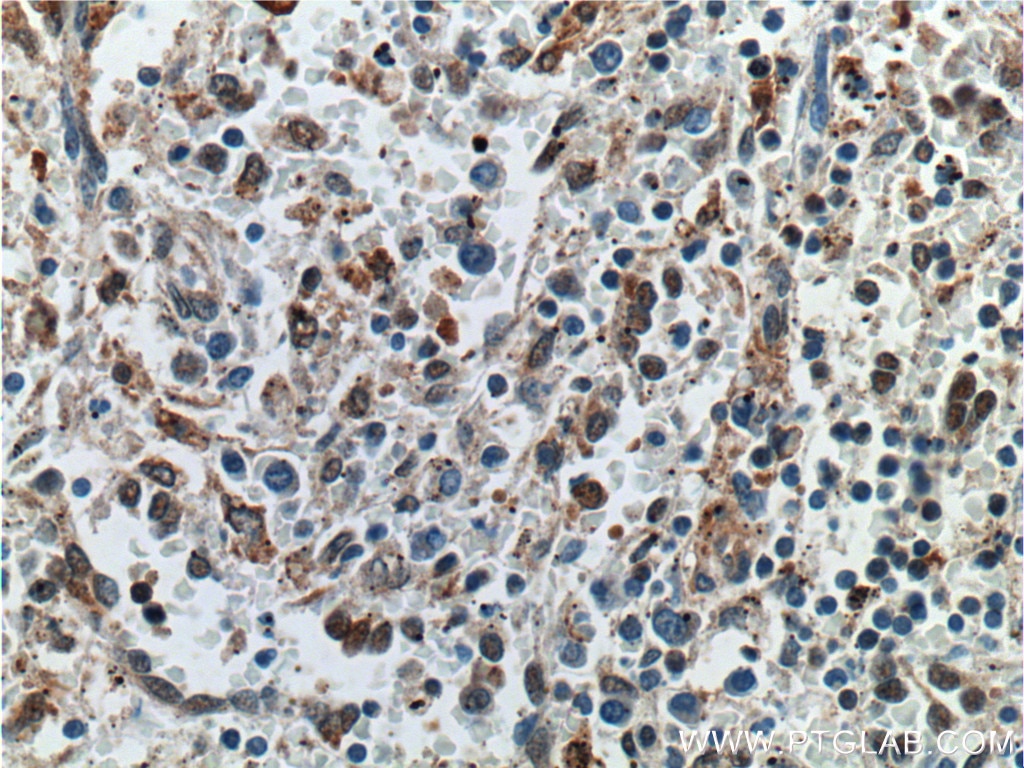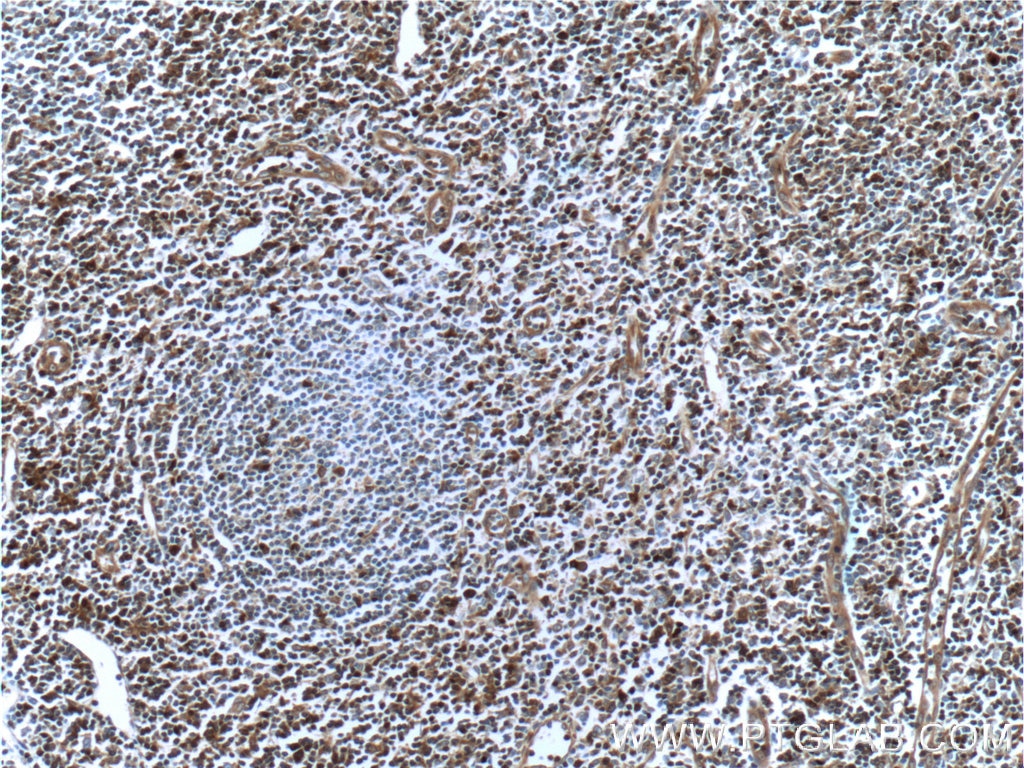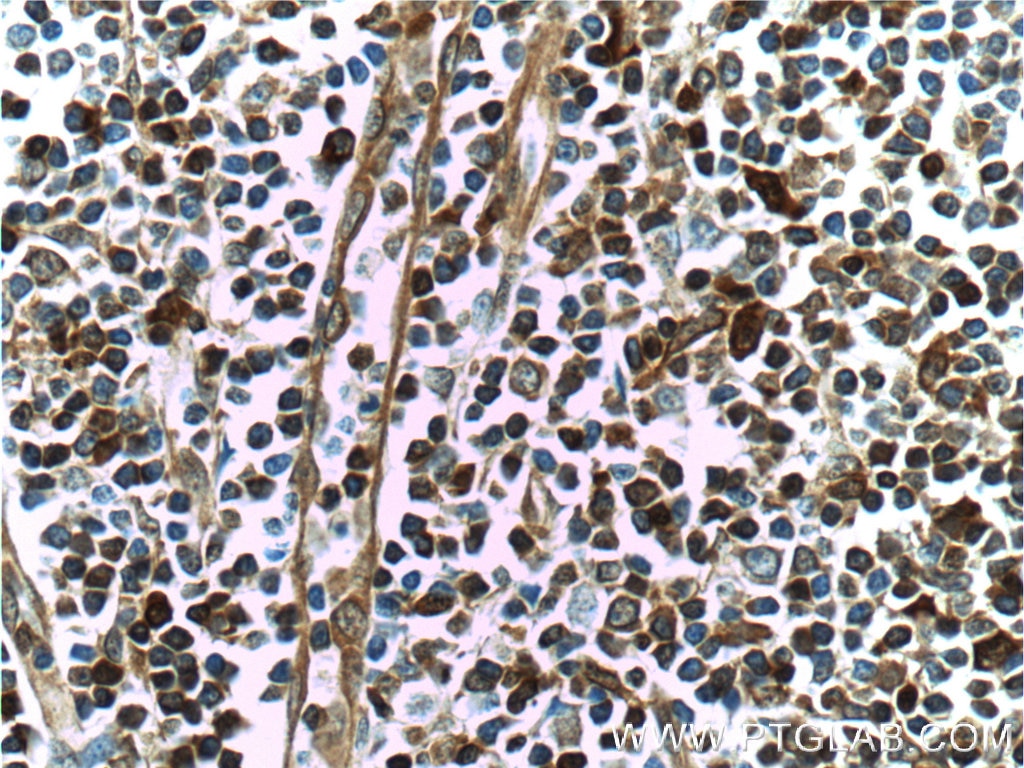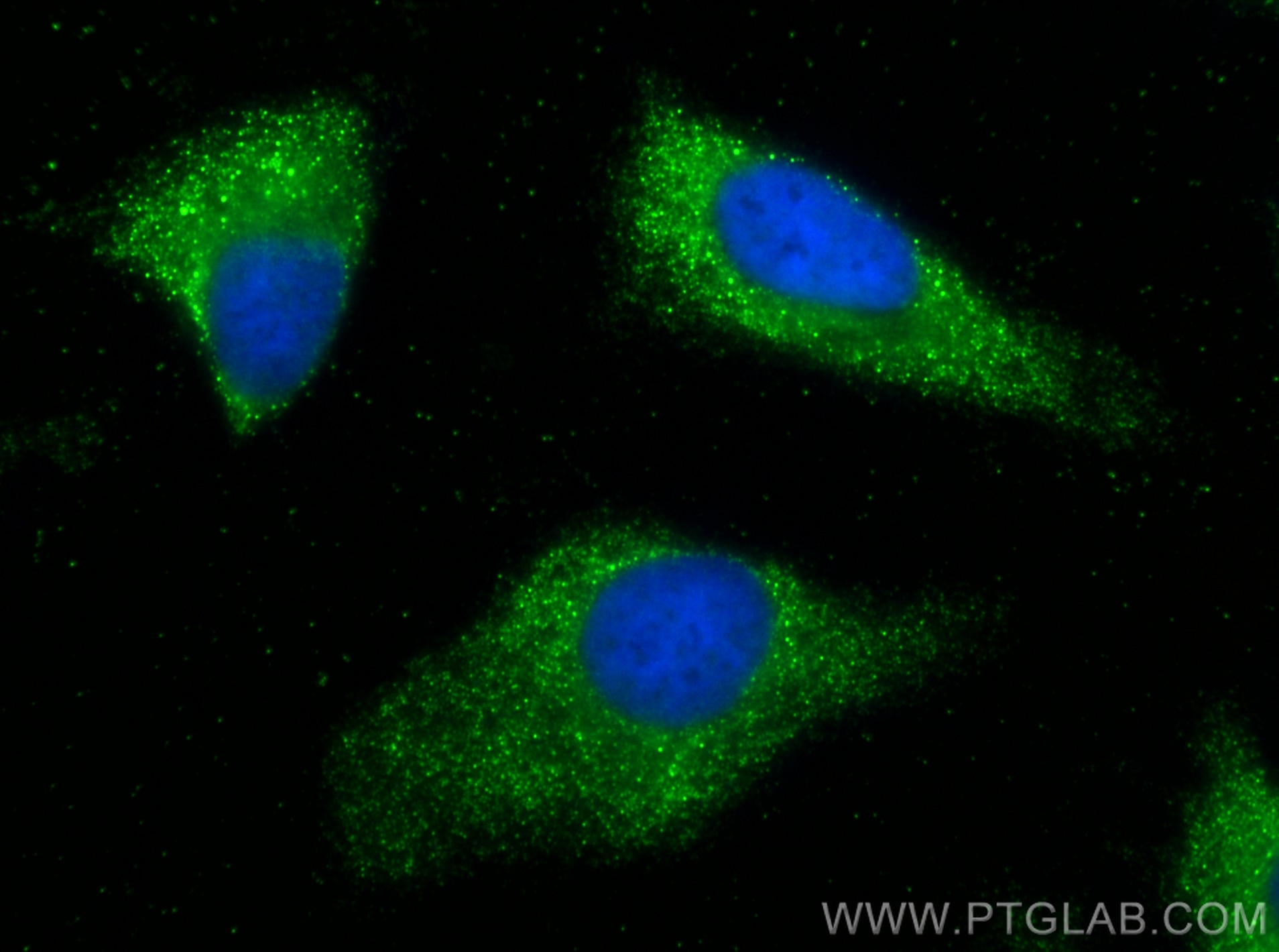- Featured Product
- KD/KO Validated
GBP2 Polyklonaler Antikörper
GBP2 Polyklonal Antikörper für WB, IHC, IF/ICC, ELISA
Wirt / Isotyp
Kaninchen / IgG
Getestete Reaktivität
human, Maus, Ratte
Anwendung
WB, IHC, IF/ICC, IP, CoIP, ELISA
Konjugation
Unkonjugiert
Kat-Nr. : 11854-1-AP
Synonyme
Geprüfte Anwendungen
| Erfolgreiche Detektion in WB | Mausmilzgewebe, A375-Zellen, humanes Lungengewebe, humanes Plazenta-Gewebe, K-562-Zellen, Rattenmilzgewebe |
| Erfolgreiche Detektion in IHC | humanes Milzgewebe, humanes Tonsillitisgewebe Hinweis: Antigendemaskierung mit TE-Puffer pH 9,0 empfohlen. (*) Wahlweise kann die Antigendemaskierung auch mit Citratpuffer pH 6,0 erfolgen. |
| Erfolgreiche Detektion in IF/ICC | HeLa-Zellen |
Empfohlene Verdünnung
| Anwendung | Verdünnung |
|---|---|
| Western Blot (WB) | WB : 1:500-1:2000 |
| Immunhistochemie (IHC) | IHC : 1:50-1:500 |
| Immunfluoreszenz (IF)/ICC | IF/ICC : 1:50-1:500 |
| It is recommended that this reagent should be titrated in each testing system to obtain optimal results. | |
| Sample-dependent, check data in validation data gallery | |
Veröffentlichte Anwendungen
| KD/KO | See 6 publications below |
| WB | See 42 publications below |
| IHC | See 12 publications below |
| IF | See 25 publications below |
| IP | See 1 publications below |
| CoIP | See 2 publications below |
Produktinformation
11854-1-AP bindet in WB, IHC, IF/ICC, IP, CoIP, ELISA GBP2 und zeigt Reaktivität mit human, Maus, Ratten
| Getestete Reaktivität | human, Maus, Ratte |
| In Publikationen genannte Reaktivität | human, Maus, Ratte |
| Wirt / Isotyp | Kaninchen / IgG |
| Klonalität | Polyklonal |
| Typ | Antikörper |
| Immunogen | GBP2 fusion protein Ag2425 |
| Vollständiger Name | guanylate binding protein 2, interferon-inducible |
| Berechnetes Molekulargewicht | 591 aa, 67 kDa |
| Beobachtetes Molekulargewicht | 67 kDa |
| GenBank-Zugangsnummer | BC022272 |
| Gene symbol | GBP2 |
| Gene ID (NCBI) | 2634 |
| Konjugation | Unkonjugiert |
| Form | Liquid |
| Reinigungsmethode | Antigen-Affinitätsreinigung |
| Lagerungspuffer | PBS with 0.02% sodium azide and 50% glycerol |
| Lagerungsbedingungen | Bei -20°C lagern. Nach dem Versand ein Jahr lang stabil Aliquotieren ist bei -20oC Lagerung nicht notwendig. 20ul Größen enthalten 0,1% BSA. |
Hintergrundinformationen
GBP2 is a member of the GTPase family and is crucial to host immunity against pathogens. GBP2 is also used as a marker of interferon (IFN) responsiveness because it is one of the most highly expressed genes after IFN-γ stimulation. Increased GBP2 expression is also associated with a better prognosis in breast cancer and may have a role in T-cell defense against breast cancer. Interestingly, GBP2 expression in NIH/3T3 fibroblasts inhibited Rac activation and matrix metalloproteinase-9 expression, suggesting a possible role for GBP2 in regulating cancer metastasis. The molecular weight of GBP2 is 67 kDa. (PMID: 29072687, 35383115)
Protokolle
| PRODUKTSPEZIFISCHE PROTOKOLLE | |
|---|---|
| WB protocol for GBP2 antibody 11854-1-AP | Protokoll herunterladen |
| IHC protocol for GBP2 antibody 11854-1-AP | Protokoll herunterladenl |
| IF protocol for GBP2 antibody 11854-1-AP | Protokoll herunterladen |
| STANDARD-PROTOKOLLE | |
|---|---|
| Klicken Sie hier, um unsere Standardprotokolle anzuzeigen |
Publikationen
| Species | Application | Title |
|---|---|---|
Nature Ubiquitination and degradation of GBPs by a Shigella effector to suppress host defence. | ||
Nature Caspase-11 activation requires lysis of pathogen-containing vacuoles by IFN-induced GTPases. | ||
Cell IRGB10 Liberates Bacterial Ligands for Sensing by the AIM2 and Caspase-11-NLRP3 Inflammasomes. | ||
Nat Immunol The transcription factor IRF1 and guanylate-binding proteins target activation of the AIM2 inflammasome by Francisella infection. | ||
Nat Neurosci A phenotypic screening platform for identifying chemical modulators of astrocyte reactivity |
Rezensionen
The reviews below have been submitted by verified Proteintech customers who received an incentive for providing their feedback.
FH Kyosuke (Verified Customer) (06-12-2019) | This antibody works very well for WB using HUVECs.
|
